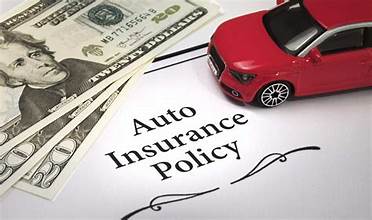I Used Chase’s Rental Car Insurance. Here’s How It Went

When we embarked on our recent road trip, we decided to take advantage of Chase’s rental car insurance. We had heard mixed reviews about it, and our curiosity drove us to experience it firsthand. Here’s an in-depth look at our experience, the benefits we found, and some unexpected twists along the way.
Understanding Chase’s Rental Car Insurance
Chase offers rental car insurance as a benefit with several of its credit cards, including the Chase Sapphire Preferred and the Chase Sapphire Reserve. This coverage can save you money and provide peace of mind while renting a car. But how does it work?
What Does Chase’s Rental Car Insurance Cover?
Chase’s rental car insurance, also known as Auto Rental Collision Damage Waiver (CDW), offers primary coverage for rental vehicles. This means it covers damages from theft or collision without the need to file a claim with your auto insurance. Here are some key aspects:
- Coverage Limits: Up to the actual cash value of the vehicle for theft and collision damage.
- Eligibility: Available when you charge the full rental cost to an eligible Chase card.
- Duration: Covers rentals up to 31 days.
- Exclusions: Luxury vehicles, motorcycles, and certain countries.
How to Activate the Coverage
To activate Chase’s rental car insurance, you need to:
- Use an Eligible Card: Pay for the entire rental car cost with a Chase card that offers this benefit.
- Decline the Rental Company’s Insurance: At the rental counter, decline the Collision Damage Waiver (CDW) or similar coverage offered by the rental company.
Our Experience with Chase’s Rental Car Insurance
Booking the Rental
Booking the rental car was straightforward. We opted for a mid-sized sedan and made sure to pay the full amount with our Chase Sapphire Reserve card. At the rental counter, we confidently declined the rental company’s insurance, relying solely on Chase’s coverage.
On the Road
Our journey was smooth for the most part, but on the third day, we encountered a minor accident. A distracted driver rear-ended us at a stoplight. While the damage was not extensive, it was significant enough to require repairs.
Filing a Claim
Filing a claim with Chase was the real test of their rental car insurance. Here’s a step-by-step account of the process:
- Report the Incident: We immediately reported the incident to the rental company and Chase.
- Documentation: Chase required several documents, including the rental agreement, police report, repair estimate, and proof of payment for the rental.
- Submission: We submitted all required documents through the Chase claims portal. The interface was user-friendly, and we received confirmation of receipt within hours.
Claim Processing
The claim processing time was impressively quick. Within a week, we received notification that our claim was approved. The entire cost of repairs was covered, and there was no impact on our auto insurance.
Benefits of Chase’s Rental Car Insurance
Cost Savings
One of the biggest benefits of using Chase’s rental car insurance is the potential for cost savings. Rental car companies often charge a daily fee for their insurance, which can add up quickly. By using Chase’s coverage, we saved a significant amount on our rental expenses.
Primary Coverage
Chase’s primary coverage means that in the event of an accident, you don’t have to involve your auto insurance. This can prevent an increase in your premiums and simplify the claims process.
Convenience
The convenience of not having to deal with multiple insurance companies cannot be overstated. With Chase, everything was handled through their claims department, making the process seamless and stress-free.
Potential Drawbacks
Exclusions
One of the main drawbacks is the exclusions. Luxury cars, trucks, and certain other vehicles are not covered. Additionally, rentals in some countries are excluded, so it’s crucial to check the terms and conditions before relying on this coverage.
Documentation Requirements
The documentation requirements, while reasonable, can be cumbersome. Ensuring you have all the necessary paperwork can be a hassle, especially when dealing with the aftermath of an accident.
Tips for Using Chase’s Rental Car Insurance
Read the Fine Print
Before relying on Chase’s rental car insurance, read the terms and conditions thoroughly. Understanding what is and isn’t covered can prevent surprises later.
Keep Records
Keep all rental documents, receipts, and any correspondence related to the rental. In the event of a claim, having everything organized will expedite the process.
Report Incidents Promptly
Report any incidents to Chase and the rental company as soon as they occur. Prompt reporting can make a significant difference in the speed and success of your claim.